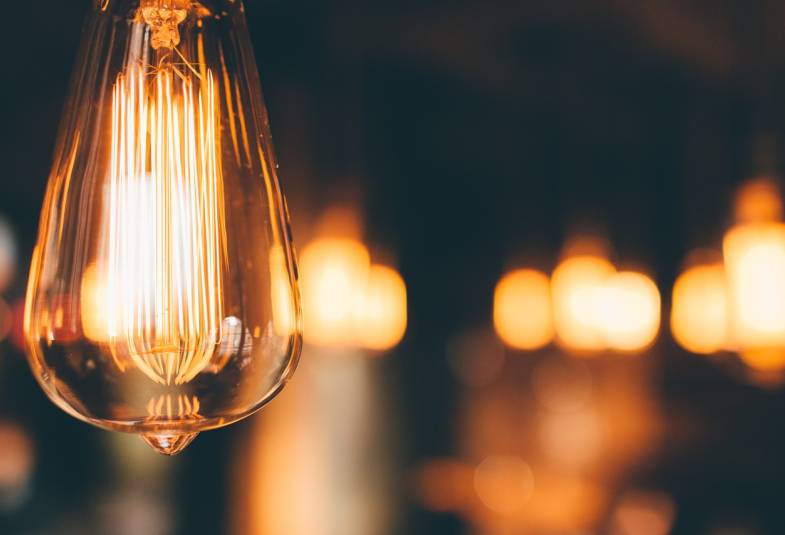Lighting a church building is challenging and requires the input of specialist advice to achieve a successful scheme.
We can help you make sure your lights have a positive impact on people’s experience of your building.
Download our Guidance

Why is a lighting scheme important?
A good lighting scheme will help people:
- See and move around freely
- Read service sheets and see projected images
- Appreciate what is special about your building
- And enjoy special events
The quality and direction of the light is as important as its intensity. And a well designed lighting scheme will take all of these things into consideration.
Hire a consultant
It’s helpful to bring in a specialist lighting consultant at the earliest possible stages of the consultation. You can also ask your architect or surveyor for help.
They will usually provide advice based on a wide range of products rather than a lighting company, and will go through a tender process with you to appoint the appropriate contractor.
Although there is a cost involved, the total cost of the project is likely to be lower.
To engage meaningfully with your specialist consultant:
Include the special features you want to highlight (e.g. wall paintings).
But take care that the scheme does not have a negative impact on those features (e.g UV or heat).
Talk to your DAC for advice first.
Recommended light levels
The lighting consultant should give you an indication of your scheme’s light levels.
The Chartered Institute of Building Services Engineers (CIBSE) recommends:
- Ambient light: 150-200 lux
- Directional lighting: 300-400 lux
- Main body of the church: 100 – 200 lux
- Pulpit or lectern: 300 lux
- Choir stalls: 200 lux
- Religiously significant areas (e.g. altars, etc.): 300 lux
- Chancel, sanctuary and platform: 200 lux
- Vestries: 150 lux
- Organ (for reading music): 300 lux
Trial your lighting scheme
It’s vital to perform proper trials of your lighting scheme with your consultant.
You cannot predict what is going to happen with lights until you see them in action and you cannot rely on computer generated views.
Initial tests should look at:
- Colour temperature
- Power
- Position, etc.
A second round of tests should look at the light fixtures and wiring.
Ideally, you should test accessibility for maintenance as part of the trial.
Important:
This is a crucial time to notice any problems and fix them.
The cost of trialling your lighting scheme is going to be a lot less than the cost of not trialling it.
Aesthetic considerations
How will you minimise the impact of the scheme on the historic fabric of your church?
Control systems
It’s important to make sure that your lighting system is easy to operate.
Most modern lighting systems have a computerised control system. This will be pre-set by the lighting designer to meet your needs.
The control system allows the lights to be adjusted for different:
- Parts of the church
- Events
- And times of year
Make sure that at least two people know how to use it. And keep a set of written instructions nearby.
Energy-saving LED lighting
Light-emitting diode (LED) lighting has established itself as the most efficient form of modern lighting. Installing it in churches, schools and associated buildings bring benefits such as:
- reduced electricity consumption
- reduced cost
- reduced carbon footprint
- improved colour temperature
- improved safety.
Depending on what you have now, you either need to make simple like-for-like swaps of the bulbs or you may need to change fittings and controls. Good lighting controls can help you programme the lights for different uses, and also reduce energy use, for example with movement sensors which turn the lights on when needed and daylight sensors which automatically dim the lights.
LED lights are also suitable for path lights and floodlights.
LED Technology is discussed on page three of our lighting guidance, as does our webinar on the effective management of church lighting towards net-zero.
Testing and maintenance
The electric system should be tested every five years by a qualified electrician. And light fittings should always be kept clean to ensure ultimate performance.
You will also need to make sure that they are safely accessible for maintenance purposes.
Contact your lighting consultant for advice on specific maintenance measures.
External lighting
Floodlighting is an effective way of drawing attention to your church building.
But you need to consider issues such as:
- Light pollution
- The effect on your neighbours
- The use of the building when the floodlights are on
Bats
Some bat species are highly susceptible to light.
If your church has bats, you must formally assess the likely impact of the scheme on the bats.